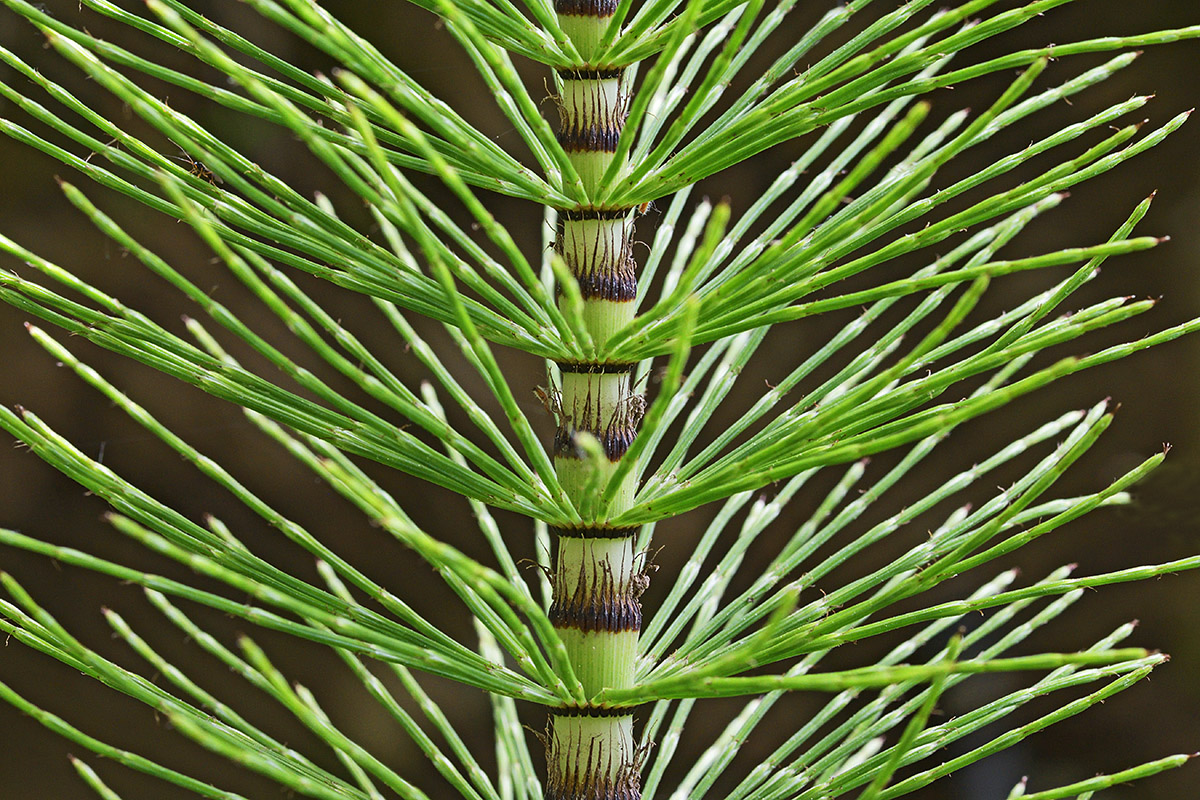Common horsetail, also named field horsetail, is an invasive, deep-rooted perennial weed. It will spread quickly to form a dense carpet of foliage, crowding out less vigorous plants in its vicinity.
Common horsetail is found throughout the temperate northern hemisphere. The species grows in a variety of moist to wet environments, including swamps, fens, meadows and forests.
Common horsetail creeps extensively with its slender and felted rhizomes that freely fork and bear tubers. Being a relative of ferns, common horsetail does not reproduce via pollen but via spores. A single horsetail spore cone can produce 100,000 spores.
Common horsetail consists of two types of stems. Reproductive and non-photosynthetic (1) and non-reproductive and photosynthetic (2). The former (1), up to 25 centimeters long with brown scale leaves and up to 4 centimeters long spore cones, emerge in spring, then wither and give way to (2) the photosynthetic stems. These are up 90 cm tall with jointed segments with whorls of side shoots that have a diameter of about 1 mm. The non-reproductive stems persist from summer until the first frost. During this time, the sterile green shoots develop into fir tree-like plants. As a perennial, the above-ground growth completely dies off in the winter.
